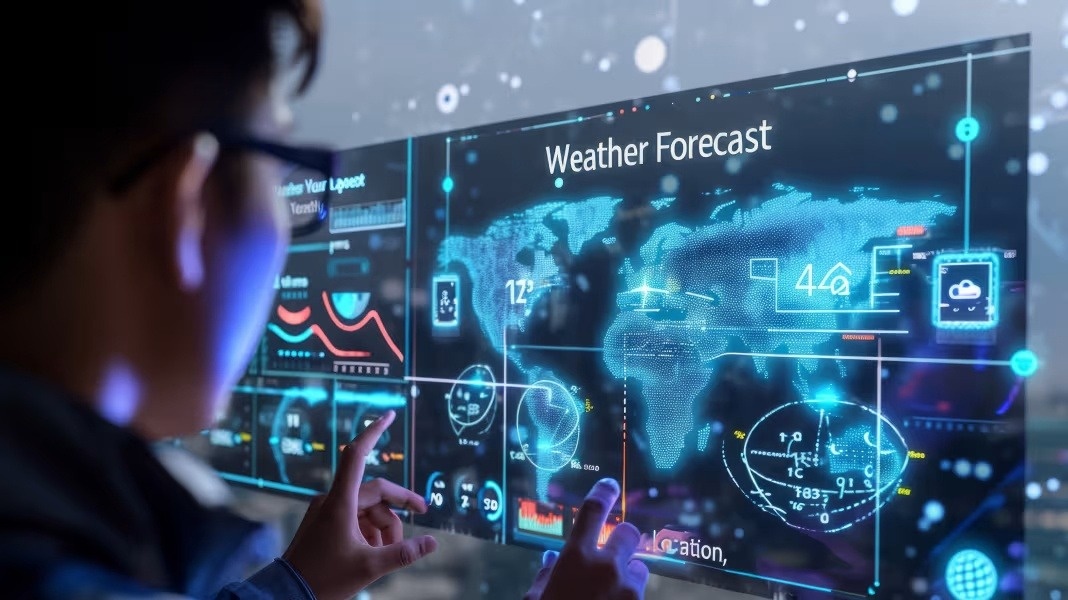
The era of computer-based weather forecasting began in 1965. Sixty years later, the Met Office is leading another technological revolution, this time fueled by artificial intelligence (AI).
According to the Financial Times , AI is helping to improve the ability to predict cloud patterns, rainfall and temperature. Specifically, the technology is expanding the range of forecasts, from super-accurate instantaneous forecasts within hours, to medium-term (3-15 days) and now can predict weather at the sub-seasonal level (2 weeks to 2 months).
“We see the potential for a real step change in the way weather is forecasted. In some ways it’s similar to when humans started using computers,” said Kirstine Dale, director of AI at the Met Office.
From digital forecasting to “end-to-end” AI
Previously, weather forecasting relied heavily on numerical weather forecasting, a computationally complex process that required supercomputers to process millions of observations in real time. Pioneering weather AI systems still require intensive data assimilation, but they then use machine learning to make forecasts.
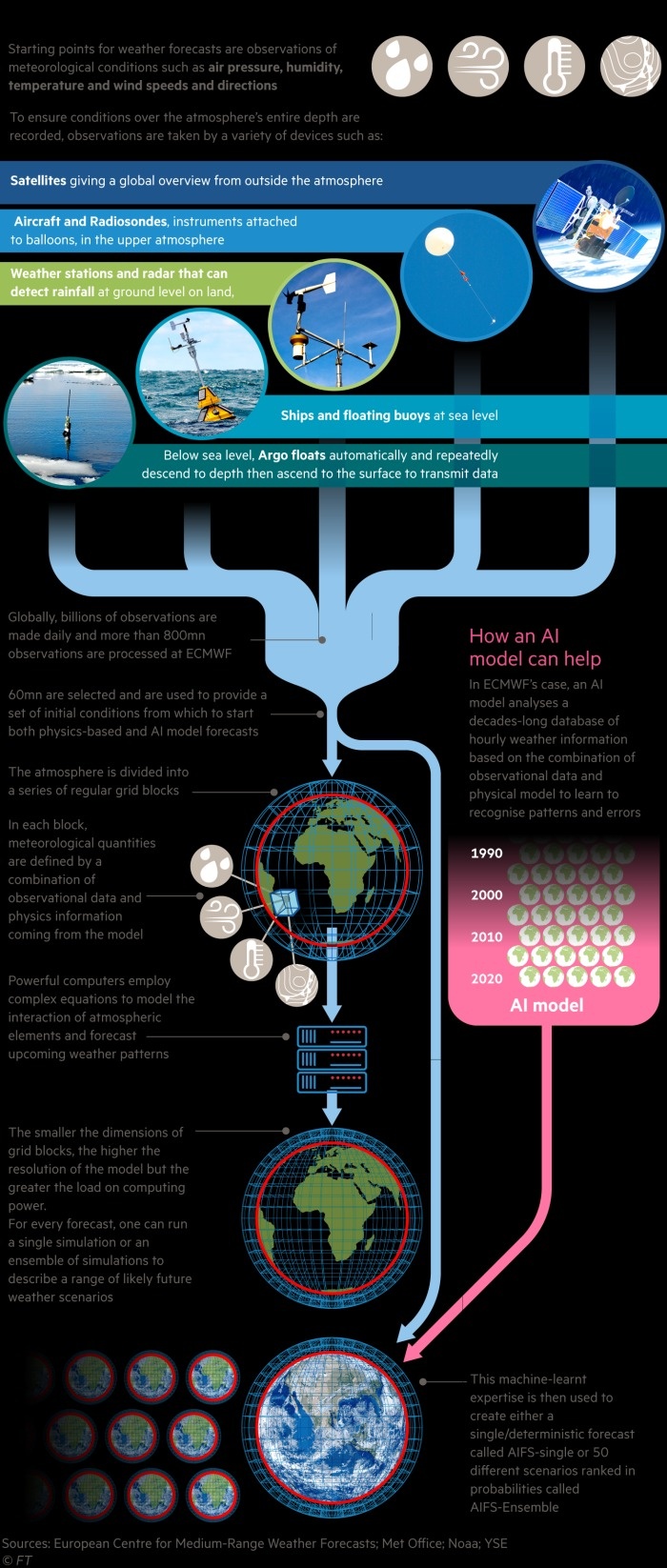 |
AI is having a profound impact on the field of weather forecasting. Photo: Financial Times. |
The initial results are promising. The European Centre for Medium-Range Weather Forecasts (ECMWF) said its first AI model, launched in February, improved accuracy by about 20% on key metrics such as predicting the path of tropical cyclones.
“The new AI technology will build on the huge improvements in forecast accuracy achieved in recent decades. Since the early 2000s, more advanced satellite data have become available and the accuracy gap between hemispheres has disappeared,” said Florence Rabier, Director General of ECMWF.
Previously, ECMWF also launched its own AI global forecast model called AIFS in October 2023.
Speaking to the Washington Post , meteorologist Matt Lanza called the AIFS forecast for Hurricane Francine in September “insane.” “You’d have to be crazy not to use it every day in your forecasting toolkit,” the expert commented.
Then, with Hurricane Milton, AIFS predicted landfall to within 13 miles of Florida. After this achievement, meteorologist Bryan Bennett declared AIFS “the most accurate model the world has ever had.”
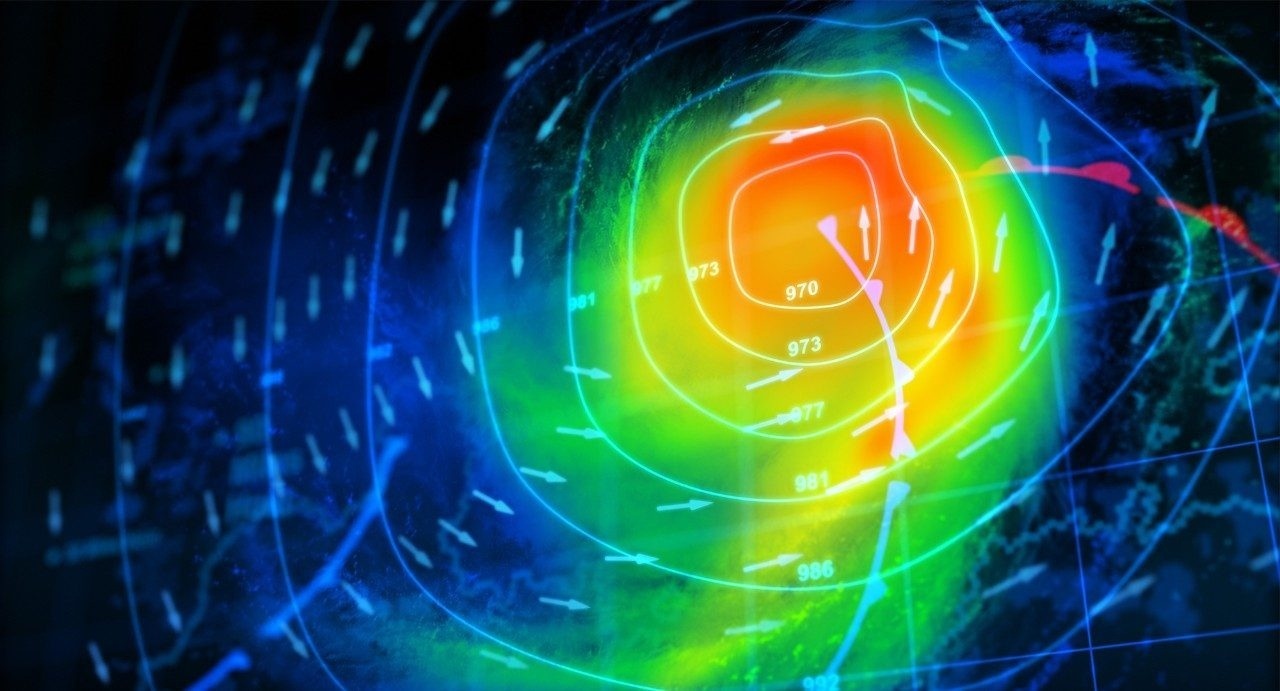 |
Traditional weather forecasting models require large amounts of computing power and must be operated by highly skilled people. Photo: 7wData. |
But that’s just the beginning of an era of AI dominating the field. According to the Financial Times , a second generation of “end-to-end” experimental AI systems is emerging, promising even more exciting possibilities.
These models skip the data assimilation step and work directly with raw observations from satellites and weather stations to generate both global and local forecasts.
“Suddenly we’re at a place where we can set up a new sensor and feed that data into a model very quickly,” said Scott Hosking of the Turing Institute. Hosking estimates that there are around 20-30 different AI weather models in various stages of development, and that number will grow rapidly in just a year.
The role of meteorologists in the future
An important question is what the role of meteorologists will be as the world becomes increasingly reliant on AI.
Despite this, Met Office officials believe the rise of technology will not take away human jobs. Instead, meteorologists will remain needed and may even be more important than ever.
They will need to evaluate differences between competing AI models, remain critical in putting raw forecast numbers into context, and communicate risk levels and mitigation measures. In fact, raw data still needs to be collected and examined to handle anomalies.
“Technology is transforming our understanding of weather—but as a powerful ally to long-established forecasting methods, not as a replacement. I see an increasingly symbiotic relationship. We need them to work together as a team,” argues Kirstine Dale.
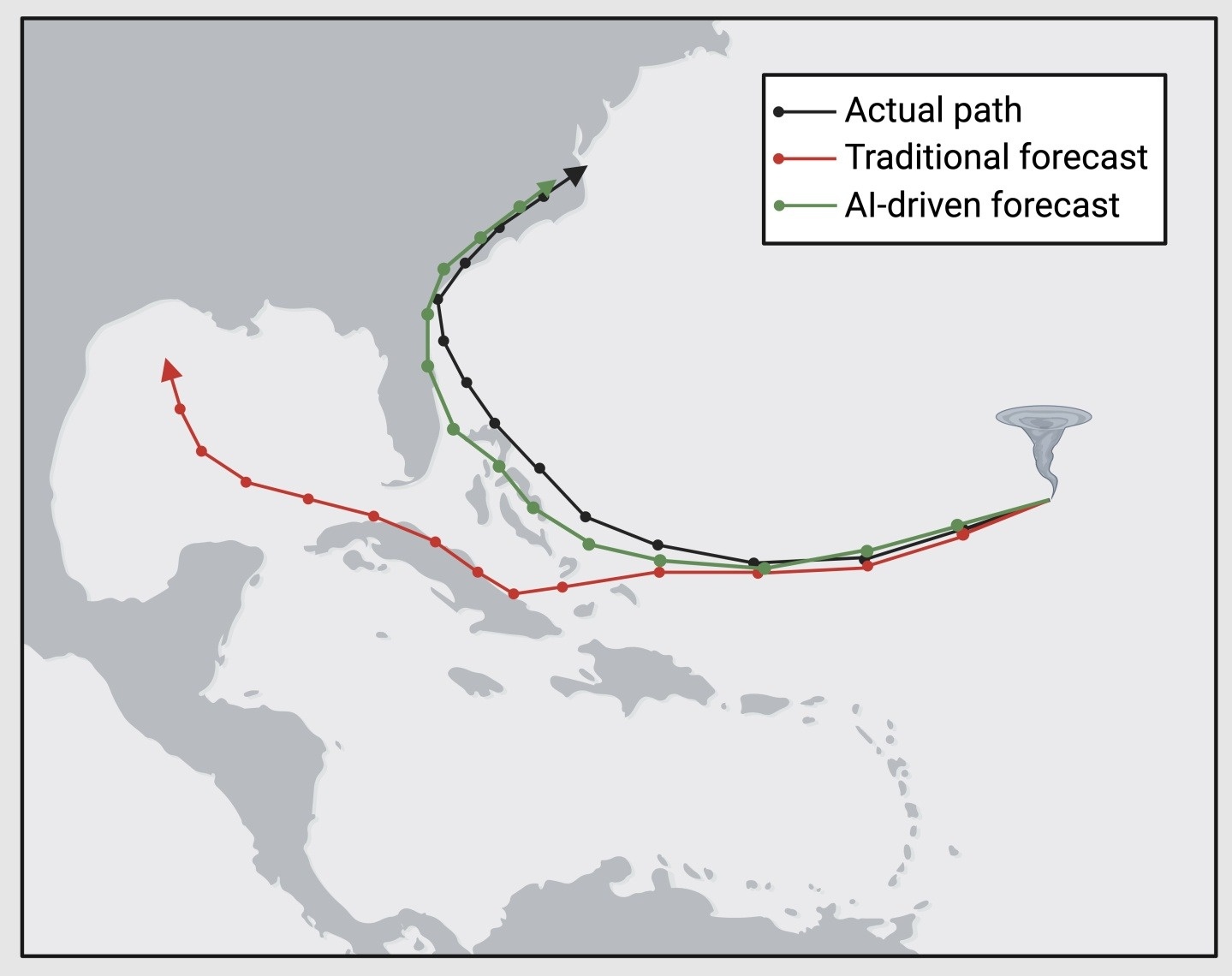 |
AI model predicts storm path compared to reality. Photo: Harvard. |
Additionally, while the prospects for AI in weather forecasting are bright, there is a big shadow looming: the risk of data shortage.
The Trump administration is looking to dramatically cut the budget and staff at the National Oceanic and Atmospheric Administration (NOAA). However, NOAA is a vital source of data from satellites, ocean buoys, balloons, and radar, all of which are freely available to meteorologists around the world.
“Any reduction in global data availability is a huge concern. I think the cuts are very dangerous at a time when the climate is really changing,” said Richard Turner, professor of machine learning at the University of Cambridge.
Source: https://znews.vn/du-bao-thoi-tiet-dang-chinh-xac-va-chi-tiet-hon-bao-gio-het-post1554568.html


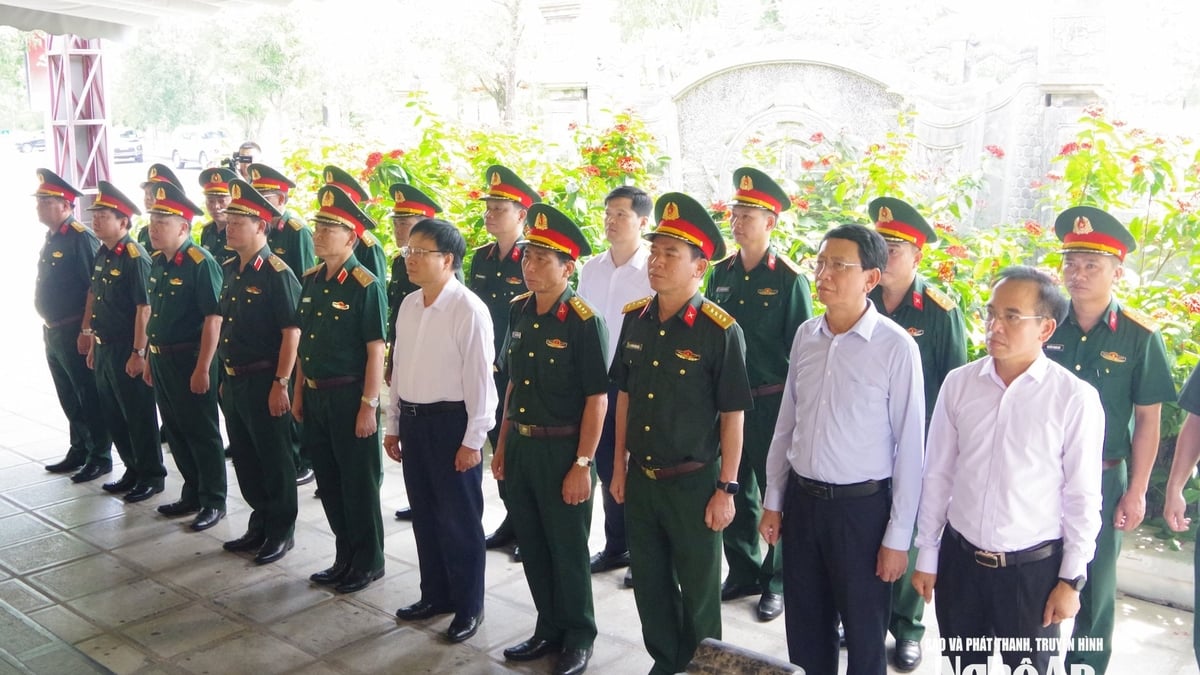
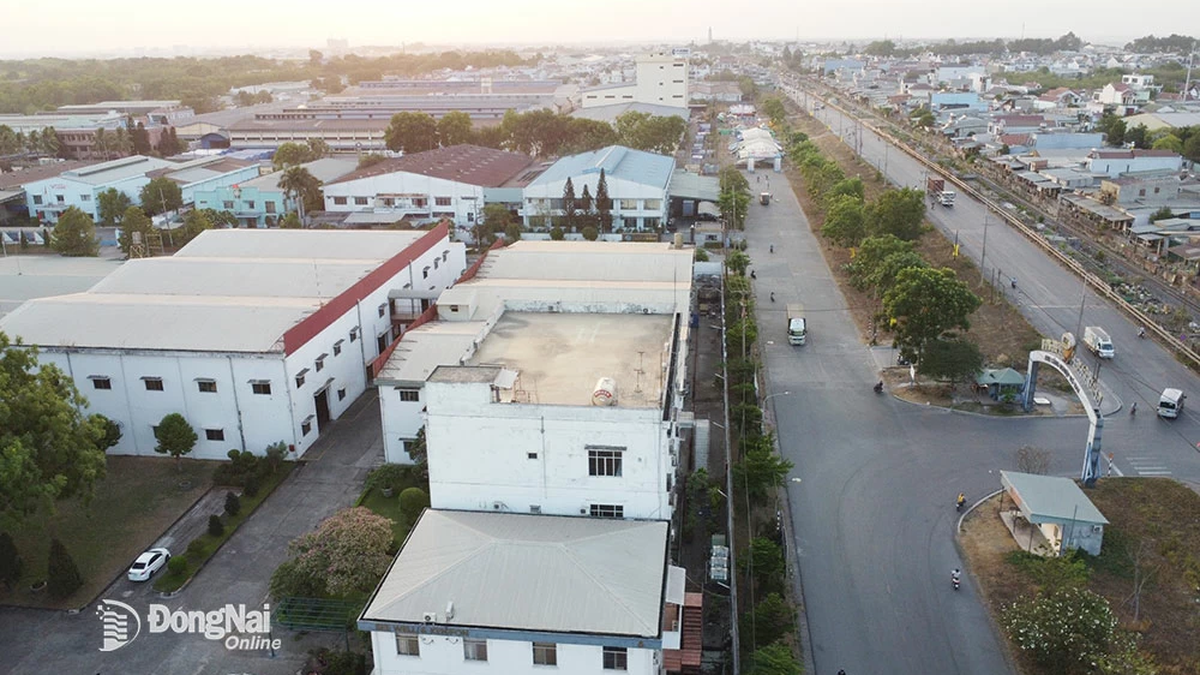






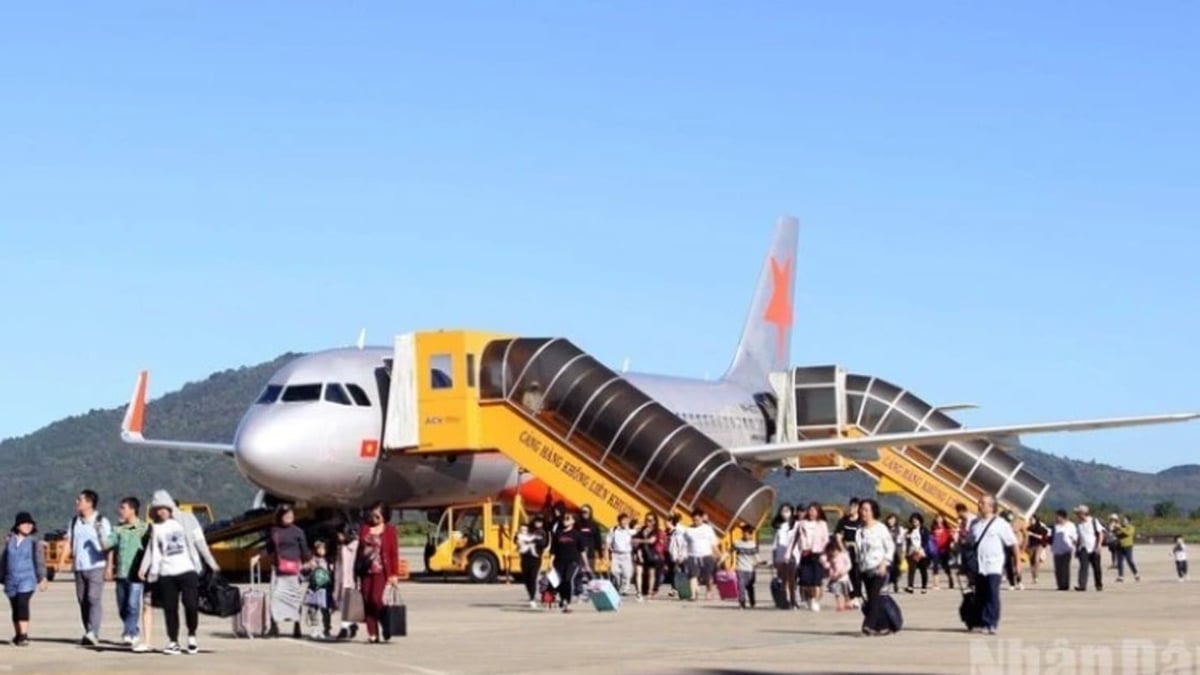









































![[Maritime News] More than 80% of global container shipping capacity is in the hands of MSC and major shipping alliances](https://vphoto.vietnam.vn/thumb/402x226/vietnam/resource/IMAGE/2025/7/16/6b4d586c984b4cbf8c5680352b9eaeb0)













































Comment (0)